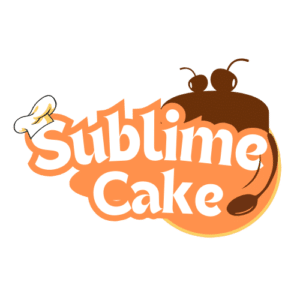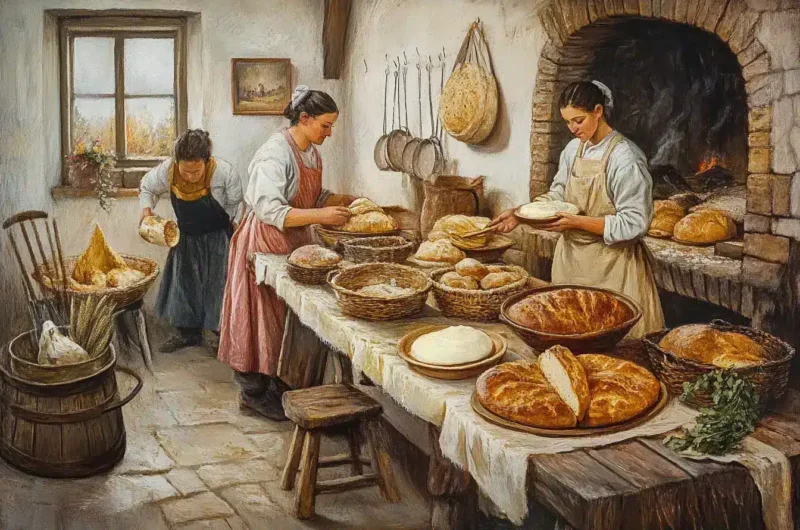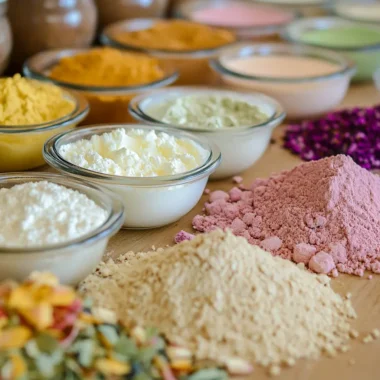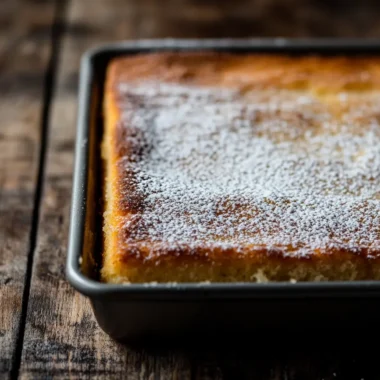Kefir sheet cake has rapidly gained popularity in the baking world. Not only is it a delicious treat, but also unique due to its rich texture and flavor. But what exactly sets it apart? The answer lies in accurate kefir sheet cake measurements. This ensures each cake sponge turns out just as intended—moist and delightful. While kefir itself is a game-changer, mastering its measurements makes all the difference. This guide dives into the essence of kefir sheet cakes, from key ingredients to delectable variations. Let’s embark on this baking journey where precision meets creativity.
1. Understanding Kefir: The Secret Ingredient
What is Kefir?
Kefir is more than just a probiotic drink; it’s a vital ingredient in baking that adds a tangy flavor and rich texture to cakes. Originating from the mountainous regions of Eastern Europe and Southwest Asia, kefir has been a staple for centuries. When incorporated into baking, kefir transforms the cake’s crumb, providing exceptional moisture and a slight sourness that balances the sweetness. Thus, it’s no surprise bakers worldwide are turning to it for a unique taste.
Health Benefits of Using Kefir
Incorporating kefir into your baking doesn’t just enhance flavor. It also boosts the nutritional profile of your cake. Kefir is loaded with probiotics, which aid digestion and support gut health. Furthermore, it’s rich in essential vitamins and minerals like calcium. The added protein from kefir fortifies the cake, making every bite both delicious and nourishing. This combination of taste and health is what makes kefir sheet cakes stand out. With kefir, you’re not just baking a cake; you’re crafting a wholesome experience.
2. The History of Kefir Sheet Cake
Cultural Origins
Dating back to ancient traditions, kefir sheet cakes have roots in various cultures. The use of fermented dairy products in baking has been a common practice among Slavic and Caucasus people. They believed it added flavor sophistication that was unattainable by other means. Over time, these communities crafted recipes that became family heirlooms. Despite the many regional variations, the essence remains the same: a rich, moist cake with a unique kick.
Evolution Over Time
As global culinary techniques evolved, so too did the kefir sheet cake. What began as a rustic dessert has transformed through modern techniques and ingredients. Today’s versions often incorporate exotic flavors like vanilla and almond, adapting to contemporary palates. Even the preferred texture has shifted, with many opting for a lighter crumb. This evolution shows how traditional recipes can blend with new influences, creating something truly innovative yet respectful of its roots.
3. Essential Ingredients for Kefir Sheet Cake
List of Key Ingredients
Creating the perfect kefir sheet cake starts with high-quality ingredients. The essentials include:
- Kefir: Serves as the star, bringing moistness and flavor.
- All-purpose flour: Provides structure.
- Sugar: Sweetens and tenderizes.
- Baking powder: Offers the lift needed for a fluffy crumb.
- Butter: Adds richness and flavor.
- Eggs: Bind and build texture.
Ingredient Substitutions and Alternatives
For those with dietary needs or preferences, substitutions are possible. For instance, almond flour can replace all-purpose flour for a gluten-free version. Additionally, coconut sugar is a popular substitute for those looking to lower their glycemic index intake. Vegan enthusiasts might use flax eggs as an alternative to regular eggs. With these choices, the versatility of a kefir sheet cake shines, catering to various tastes and health considerations.
4. Kefir Sheet Cake Measurements: Getting It Right
Why Accurate Measurements Matter
Precision in kefir sheet cake measurements ensures consistent results, which are the backbone of any successful recipe. Baking is a science, where accuracy determines structure and flavor balance. Each ingredient plays a unique role; thus, altering quantities can lead to undesirable outcomes, such as a dense or overly crumby cake. Therefore, attention to detail in measurements ensures the cake emerges from the oven perfectly each time, fulfilling its culinary promise.
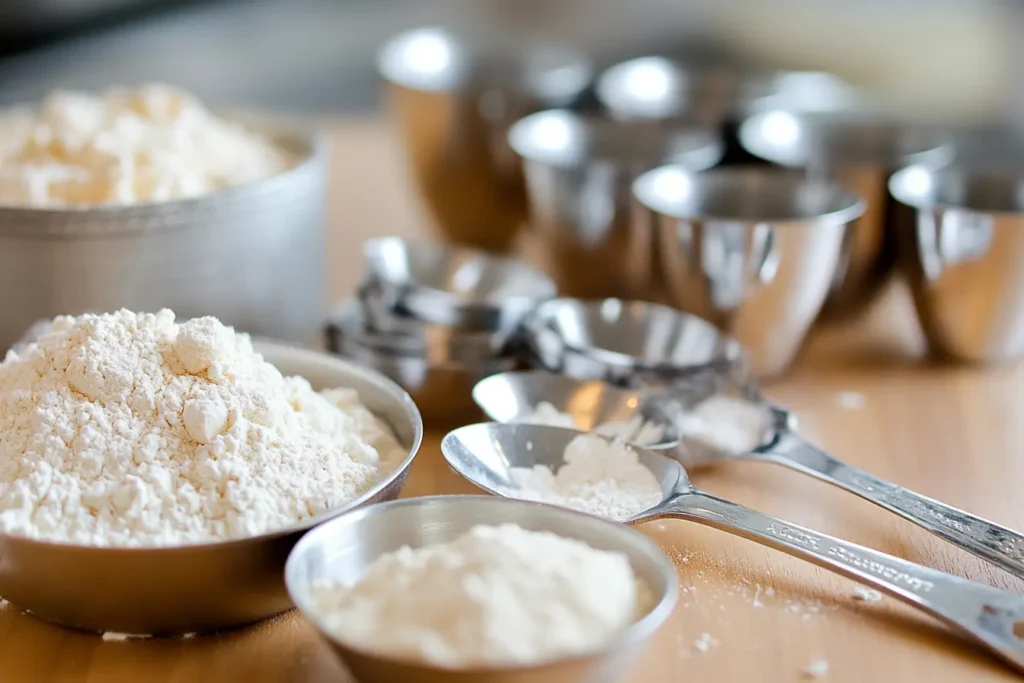
Detailed Measurement Breakdown
Here’s a breakdown of necessary kefir sheet cake measurements for a standard recipe:
- 1 cup of kefir
- 2 cups of all-purpose flour
- 1½ cups of sugar
- 1 teaspoon of baking powder
- ½ cup of softened butter
- 2 large eggs
Using the right measuring tools, such as dry and liquid measuring cups, safeguards the cake’s intended texture. Additionally, there’s room for slight modifications based on personal preference, yet core measurements help achieve a delightful and consistent cake each time.
Kefir sheet cake is taking the baking world by storm, capturing the hearts of pastry enthusiasts everywhere. This delightful dessert stands out because of its moist, tender crumb and distinct tangy flavor. What truly sets it apart, though, is its use of kefir, a fermented milk product known for its myriad health benefits. To achieve the perfect balance of flavor and texture, paying attention to kefir sheet cake measurements is crucial. Accurate measurements ensure that each bite is consistently delectable, satisfying both seasoned bakers and curious beginners.
5. Step-by-Step Recipe Instructions
Preheating the Oven
Preheat your oven to 350°F (175°C). This step is vital because an accurately heated oven ensures even baking. Without it, your cake may end up uncooked in the center or burnt on the edges. While the oven heats, take the time to prepare your ingredients, measuring each one precisely for the best results. The right measurements in baking are more than just a suggestion; they are essential for the ultimate success of your kefir sheet cake.
Mixing the Ingredients
Begin by sifting flour, baking powder, and salt into a bowl. In a separate mixing bowl, cream the butter and sugar together until light and fluffy. Gradually add eggs, mixing well after each addition. Slowly incorporate the kefir, using precise kefir sheet cake measurements, of course, to strike the perfect balance of flavors. Finally, fold in the dry ingredients just until combined. Over-mixing at this stage can lead to a dense cake, disrupting the light texture.
Baking Time and Temperature
Transfer the batter to a greased 9×13-inch pan and bake in the preheated oven for 30 to 35 minutes. Monitoring the baking time closely is crucial. To check for doneness, insert a toothpick into the cake’s center; if it comes out clean, the cake is ready. Frequent checking in the last five minutes will help you avoid overbaking, which can lead to a dry cake. The right timing, combined with exact measurements, ensures a perfectly baked kefir sheet cake.
6. Choosing the Best Pan for Your Kefir Sheet Cake
Recommended Pan Sizes
For the best results, use a 9×13-inch baking pan. This size allows for even baking and is ideal for most sheet cakes. If you’re working with different pan dimensions, adjust the baking time accordingly. Smaller pans may require a longer bake, while larger ones could need less time. It’s vital to understand how your equipment affects the final product.
Preparing the Pan
Properly preparing your pan is just as important as choosing the right size. Grease the pan thoroughly with butter or a non-stick spray, ensuring you get into every corner. For extra security against sticking, line the bottom with parchment paper. Taking these steps helps your cake release smoothly after baking, preserving its structure and appearance. Consistent pan preparation paired with exact measurements can make or break your final outcome.
7. Tips and Tricks for a Perfect Kefir Sheet Cake
Ensuring Even Baking
Achieving uniform baking is easier when you rotate the pan halfway through the baking time. This simple action ensures every part of the cake gets even exposure to the oven’s heat, preventing one side from becoming overcooked. Additionally, make sure your oven’s temperature is calibrated correctly using an oven thermometer. Even heat distribution complements accurate kefir sheet cake measurements, ensuring every part of the cake bakes perfectly.
Avoiding Common Mistakes
Common baking pitfalls such as over-mixing or incorrect ingredient proportions can lead to unsatisfactory results. To avoid such mistakes, always measure your ingredients precisely and follow the instructions to the letter. Also, be mindful of the freshness of your baking powder and soda, as expired leavening agents can result in a flat cake. Avoiding these errors, alongside using exact measurements, can ensure your baking success.
8. Delicious Variations of Kefir Sheet Cake
Flavor Enhancements
Elevate the basic recipe by experimenting with different flavor add-ins. Adding cocoa for a chocolate twist or zesting citrus into the batter can create intriguing flavor profiles. These enhancements offer a delightful surprise in every bite, showcasing the versatility of kefir sheet cake. Remember, balance is key—keep your added ingredients in harmony to maintain the cake’s integrity.
Incorporating Fruits and Nuts
For added texture, consider folding fruits like blueberries or raspberries into the batter. Nuts such as almonds or walnuts can also bring a crunchy contrast to the soft cake. This mix of textures creates a dynamic mouthfeel, making every slice an experience. When adding fruits or nuts, ensure they are evenly distributed to avoid sinking during baking.
Dietary-Friendly Adaptations
Adaptations are easy to make for those with dietary restrictions. Substitute traditional flour with gluten-free variants, or replace eggs and butter with vegan alternatives to create a cake that suits everyone. These adaptations make the kefir sheet cake inclusive without compromising on taste or texture. Ensuring everyone can enjoy a slice is a vital consideration when baking for diverse groups.
When it comes to frosting and decorating your kefir sheet cake, the possibilities are endless. Traditional frosting options like buttercream or cream cheese frosting are classic choices that complement the unique tanginess of kefir. Additionally, they are easy to make and allow you to create a stunning presentation. To start, ensure your cake has cooled completely before applying any frosting. This prevents melting and ensures a smooth application. Transitional flavors, such as vanilla and chocolate, harmonize perfectly with the cake’s distinct flavor.
Frosting and Decorating Your Kefir Sheet Cake
For simple decorating ideas, you don’t need to be a professional baker. Consider using a pastry bag fitted with various tips to create elegant swirls or rosettes. Adding fresh fruit or edible flowers can enhance the aesthetic appeal and add a natural touch. For more fun, sprinkle nuts or chocolate shavings on top. Expert decorators often use a thin layer of frosting called a crumb coat to catch any loose crumbs, followed by a more generous layer for the final presentation.
Matching frosting flavors with cake flavors is crucial for a balanced taste. If you’ve added citrus to your cake, a lemon or orange zest-infused frosting can be delightful. For chocolate variations, a rich chocolate ganache or mocha frosting is ideal. Always taste-test different combinations to find what best complements your cake. Remember, using high-quality ingredients for your frosting will reflect in the taste and texture, making your kefir sheet cake truly memorable.
Frequently Asked Questions (FAQ)
Many bakers have questions about perfecting their kefir sheet cake measurements and process. A common query is, “What are the measurements for a kefir sheet cake?” Accurate measurements are crucial; refer back to our detailed breakdown for guidance. Another frequently asked question is, “How do you make a kefir sheet cake?” To summarize, mix the dry and wet ingredients separately before combining, ensuring the batter is smooth and lump-free.
Bakers often ask, “What is the best pan size for a sheet cake?” A 9×13-inch pan is ideal for even baking and maintains the proper cake thickness. Lastly, “Can I use kefir instead of buttermilk in baking?” Yes, kefir can be a direct substitute, offering a similar tangy flavor and texture from natural fermentation. Other questions might arise as you bake; remember, experimentation is part of the learning process.
Troubleshooting Common Issues
Encountering issues with your kefir sheet cake can be frustrating, but solutions are readily available. If your cake doesn’t rise properly, check your leavening agents. Ensure you’ve used fresh baking soda or powder and that the measurements are accurate. Another common problem is dealing with texture problems. If your cake turns out too dense or too crumbly, revisit the mixing process. Overmixing can cause a dense texture, while undermixing can result in a crumbly cake.
Flavors not aligning with expectations is another issue bakers face. For example, if the cake is too tangy, consider balancing the flavors with a sweeter frosting or adding a bit more sugar to the batter. On the other hand, if it’s not sweet enough, a flavored syrup brushed over the cake layers post-baking can enhance sweetness subtly. With proper attention to these details, you can ensure your kefir sheet cake is delightful.
Additional Resources and Links
Expand your knowledge with these helpful external resources: Kefir Baking Tips offers comprehensive insights for baking with kefir. Visit Health Benefits of Kefir to learn more about its nutritional advantages. For a broader perspective, explore Baking with Kefir for diverse recipes and ideas.
Additionally, browse these internal resources for more techniques and inspiration: our Kefir Sheet Cake Guide offers an in-depth look at creating the perfect cake. Curious about kefir’s role in your cake? Visit What Does Kefir Do in Baking? for a detailed explanation. Don’t miss out on other exciting recipes with our Kefir Cake Recipe.
